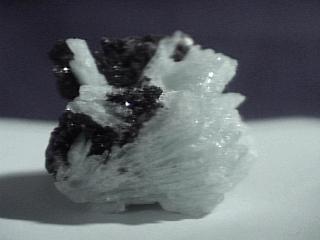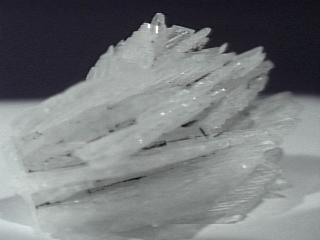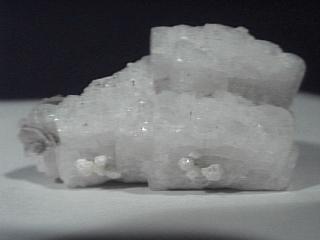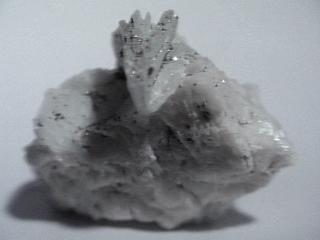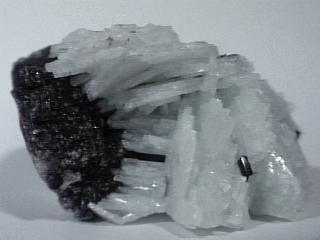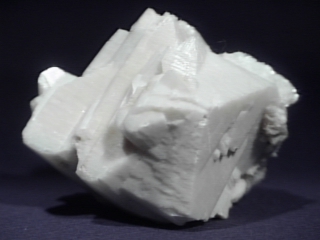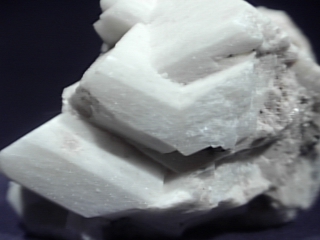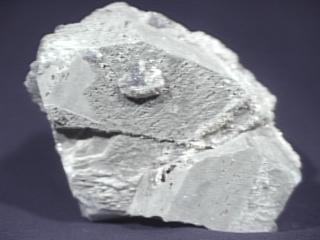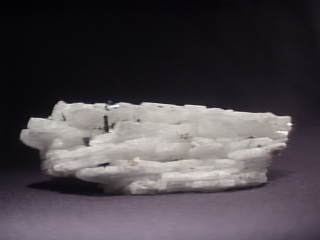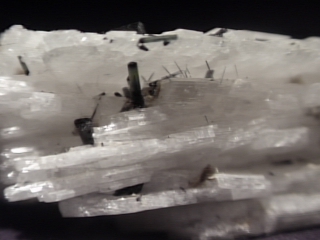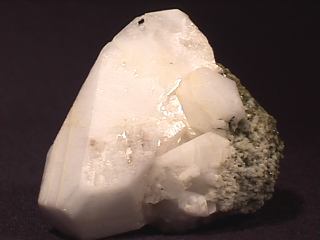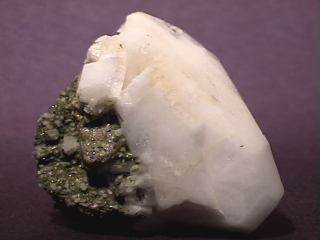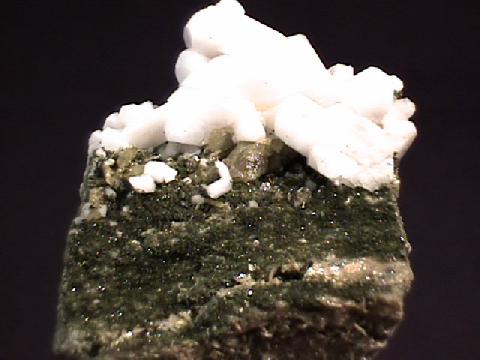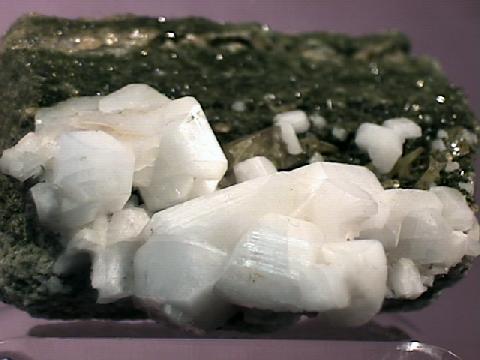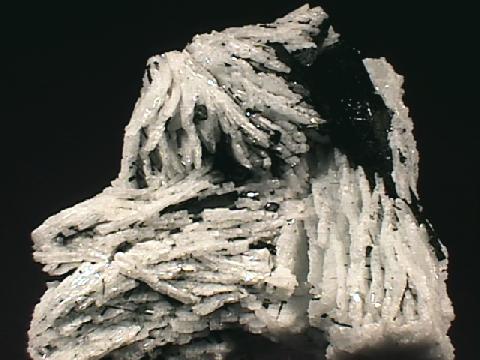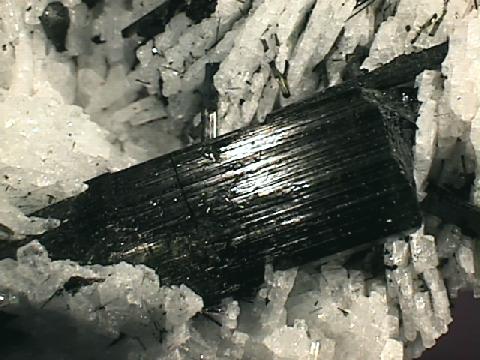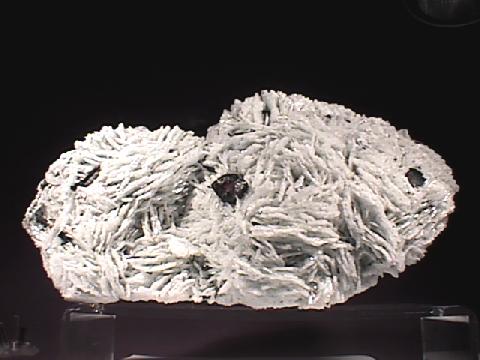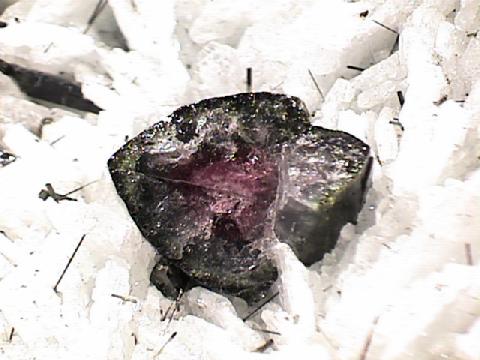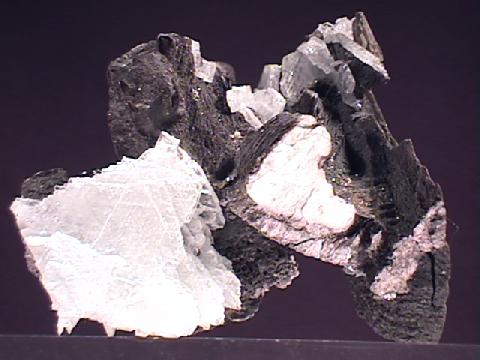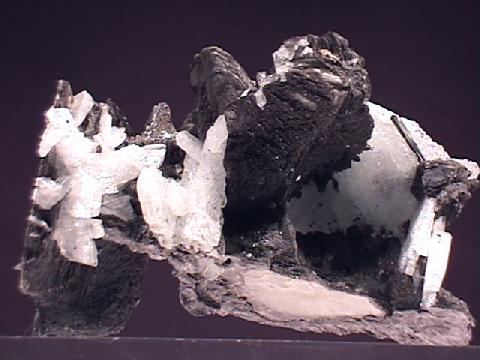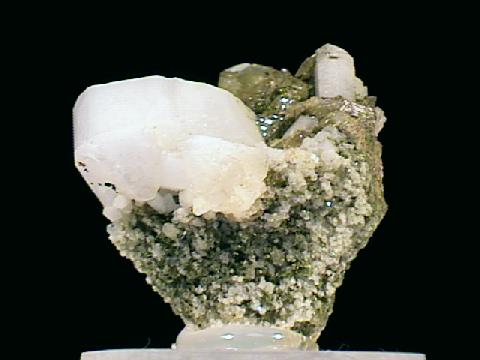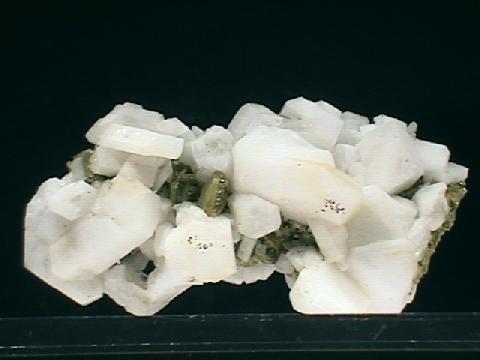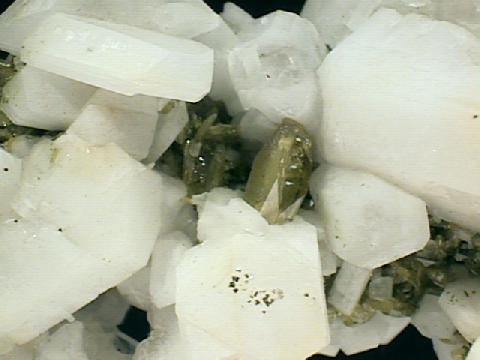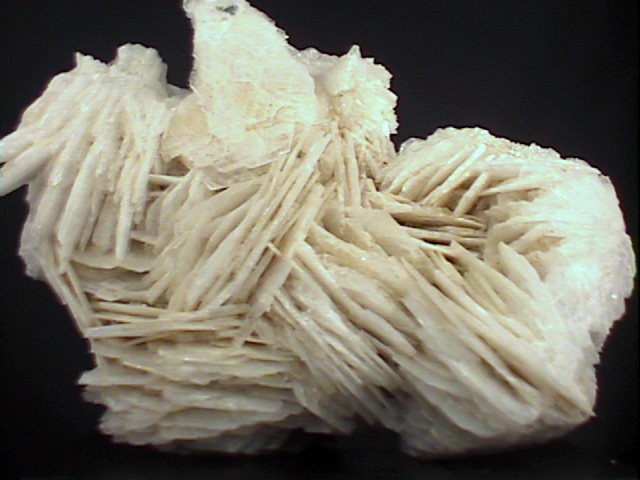 THE MINERAL ALBITE
THE MINERAL ALBITE
- Chemistry: NaAlSi3 O8, Sodium aluminum silicate.
- Class: Silicates
- Subclass: Tectosilicates
- Group: Feldspars
- Uses: ornamental stone, ceramics and mineral specimens.
Specimens
Albite is a common felspar and is the "pivot" mineral of two different feldspar series. It is most often associated with the plagioclase series where it is an end member of this series. The plagioclase series comprises felspars that range in chemical composition from pure NaAlSi3 O8 to pure CaAl2 Si2 O8 . The various plagioclase feldspars are identified from each other by gradations in index of refraction and density in the absence of chemical analysis and/or optical measurements. Albite is also an end member of the alkali or K-feldspars whose series ranges from pure NaAlSi3 O8 to pure KAlSi3 O8. This series only exists at high temperatures with the mineral sanidine being the potassium, K, rich end member. At lower temperatures, the K-feldspars will seperate from the albite in a process called exsolution. The albite will form layers inside the k-feldspars crystals. Some times these layers are discernable to the naked eye and the stone is referred to as perthite. Albite by definition must contain no less than 90% sodium and no more than 10% of either potassium and/or calcium in the cation position in the crystal structure..
Albite is the last of the feldspars to crystallize from molten rock. The process of crystallization from a molten rock body serves to isolate rarer elements in the last stages of crystallization and therefore produces rare mineral species. Thus albite is often found with some lovely rare and beautiful minerals. Although usually not an exceptional collection mineral in itself, albite can be a nice accessory mineral to other mineral species. A variety associated with tourmaline is called cleavelandite and forms extremely thin, platy, white and sometimes very transparent crystals.
All plagioclase feldspars show a type of twinning that is named after albite. Albite Law twinning produces stacks of twin layers that are typically only fractions of millimeters to several millimeters thick. These twinned layers can be seen as striation like grooves on the surface of the crystal and unlike true striations these also appear on the cleavage surfaces. The Carlsbad Law twin produces what appears to be two intergrown crystals growing in opposite directions. Two different twin laws, the Manebach and Baveno laws, produce crystals with one prominant mirror plane and penetrant angles or notches into the crystal. Although twinned crystals are common, single crystals showing a perfect twin are rare and are often collected by twin fanciers.
PHYSICAL CHARACTERISTICS:
- Color is usually white (Albite is derived from the same root word as albino) or colorless but can be shades of blue, yellow, orange and brown.
- Luster is vitreous to dull if weathered..
- Transparency crystals are translucent to opaque and only sometimes transparent.
- Crystal System is triclinic; bar 1
- Crystal Habits include blocky, tabular and platy crystals. The typical crystal has a nearly rectangular or square cross-section with slightly slanted dome and pinacoid terminations. A variety called Cleavelandite forms very thin platy crystals that can grow rather large (15+ cm across) but can maintain an even thickness of only a few millimeters. Twinning is almost universal in albite. Crystals can be twinned according to the Albite, Carlsbad, Manebach and Baveno laws. Albite is a common constituent of granitic and syenite rocks. Can also be massive.
- Cleavage is perfect in one and good in another direction forming nearly right angled prisms.
- Fracture is conchoidal.
- Hardness is 6 - 6.5.
- Specific Gravity is approximately 2.61 (average)
- Streak is white.
- Associated Minerals are quartz, tourmaline and muscovite.
- Other Characteristics: index of refraction is 1.53. Lamellar twinning may cause a grooved effect on cystal surfaces that appear as striations. Some albite may show an opalescence due to twinning and is referred to as moonstone.
- Notable Occurrences include Labrador, Canada and the Scandinavian Peninsula.
- Best Field Indicators are occurence, crystal habit, twinning, striations, density and index of refraction.

